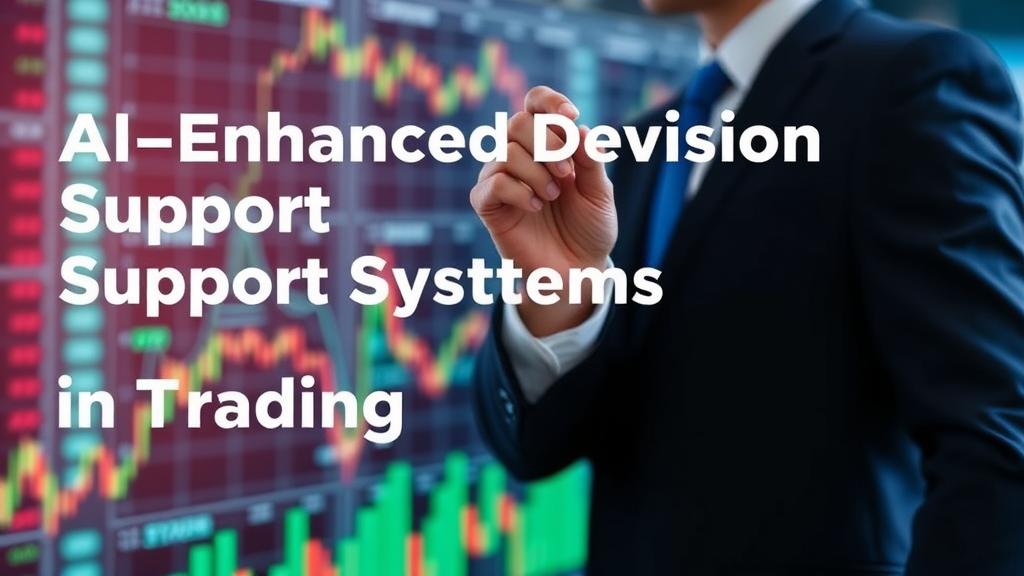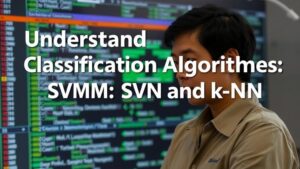Inviting Exploration of Advanced Strategies
Curious about how advanced algorithms are influencing investment strategies? Let’s dive into the mechanics of modern trading.
AI-Enhanced Decision Support Systems in Trading
In the fast-paced world of trading, the ability to make informed decisions quickly can mean the difference between profit and loss. As financial markets become increasingly complex, traders and investors are turning to technology for assistance. One of the most transformative technologies in this realm is Artificial Intelligence (AI). AI-enhanced Decision Support Systems (DSS) are revolutionizing the way traders analyze data, identify trends, and execute trades. This article explores the role of AI in trading, the benefits of AI-enhanced Decision Support Systems, their components, and real-world applications.
AI’s integration into trading has fundamentally changed how market participants operate. The technology leverages vast amounts of data to provide insights that were previously unattainable. Key roles of AI in trading include:
- Data Analysis**: AI algorithms can process large datasets quickly, identifying patterns and anomalies that may go unnoticed by human traders.
- Predictive Modeling**: By utilizing historical data, AI can predict future market movements, providing traders with actionable insights.
- Automated Trading**: AI systems can execute trades based on predefined criteria, eliminating human emotions and reducing the time between analysis and execution.
The adoption of AI in trading is not just a trend; it is becoming a necessity for those who want to stay competitive in the market.
Benefits of AI-Enhanced Decision Support Systems
AI-enhanced Decision Support Systems offer numerous advantages to traders and investors. Some of the most significant benefits include:
1. Improved Accuracy
AI algorithms can analyze data with a level of precision that is difficult for humans to achieve. By minimizing the risk of human error, traders can make better-informed decisions. For instance:
- Statistical Analysis**: AI can perform complex statistical analysis, providing insights into correlations and market movements that may not be immediately clear.
- Real-Time Analysis**: AI systems can analyze data in real-time, allowing traders to capitalize on fleeting opportunities.
2. Enhanced Efficiency
Time is money in trading, and AI systems can dramatically improve efficiency. With AI:
- Faster Data Processing**: AI can analyze thousands of data points within seconds, enabling traders to respond rapidly to market changes.
- Automation of Routine Tasks**: AI can automate repetitive tasks, freeing up traders to focus on strategy and decision-making.
3. Risk Management
AI-enhanced DSS can better assess risks associated with different trading strategies. Key features include:
- Dynamic Risk Assessment**: AI systems can continuously evaluate market conditions and adjust risk-management strategies accordingly.
- Scenario Analysis**: Traders can simulate various market conditions to understand potential risks and rewards before making decisions.
4. Personalization
AI systems can tailor recommendations based on individual trading preferences, risk tolerance, and historical performance. This personalization can lead to:
- Customized Alerts**: Traders receive notifications based on their specific interests and strategies.
- Adaptive Strategies**: AI can learn from a trader’s decisions and adjust its recommendations over time.
Components of AI-Enhanced Decision Support Systems
Understanding the components of AI-enhanced Decision Support Systems helps to appreciate how they function in the trading environment. Key components include:
1. Data Sources
AI systems rely on diverse data sources to inform their analyses. These include:
- Market Data**: Prices, volumes, and historical data from relevant exchanges.
- Alternative Data**: Social media sentiment, news articles, and economic reports that can influence market behavior.
- User Input**: Data from traders regarding preferences and historical decisions.
2. Machine Learning Algorithms
At the heart of AI-enhanced DSS are machine learning algorithms that enable systems to learn and adapt. Common types include:
- Supervised Learning**: Algorithms trained on labeled datasets to predict outcomes based on historical data.
- Unsupervised Learning**: Algorithms that identify patterns in data without predefined labels, useful for discovering unknown trends.
- Reinforcement Learning**: Algorithms that learn strategies through trial and error, optimizing decisions based on rewards and penalties.
3. Data Visualization Tools
Effective decision-making requires clear data presentation. Modern AI-enhanced DSS incorporate advanced data visualization tools that allow traders to:
- Interpret Complex Data**: Visualizations help in understanding intricate relationships and trends.
- Monitor Real-Time Performance**: Dashboards provide instant feedback on trading strategies and market conditions.
4. User Interface
A user-friendly interface is crucial for effective interaction with AI systems. Important features include:
- Customizable Dashboards**: Traders can tailor information displays to suit their needs.
- Interactive Tools**: Users can engage with simulations and scenario analyses easily.
Real-World Applications of AI-Enhanced Decision Support Systems in Trading
AI-enhanced Decision Support Systems have already made significant inroads into various trading environments. Here are a few real-world applications:
1. Algorithmic Trading
Algorithmic trading leverages AI to execute trades at high speeds based on pre-set criteria. Examples include:
- High-Frequency Trading (HFT)**: Firms use AI algorithms to execute large volumes of trades in fractions of a second, capitalizing on minute price discrepancies.
- Smart Order Routing**: AI systems analyze market conditions to determine the best venues for executing trades, optimizing costs and efficiency.
2. Portfolio Management
AI-enhanced DSS are invaluable in portfolio management. They assist in:
- Asset Allocation**: AI analyzes performance metrics to recommend optimal asset distribution based on risk tolerance and investment goals.
- Rebalancing Strategies**: AI can automate the rebalancing of portfolios to maintain target allocations based on changing market conditions.
3. Market Sentiment Analysis
Understanding market sentiment is crucial for traders. AI systems can analyze:
- News Sentiment**: Natural language processing (NLP) algorithms can gauge market sentiment from news articles and social media.
- Investor Behavior**: By analyzing trading patterns, AI can identify shifts in investor sentiment that may signal market movements.
4. Risk Mitigation
AI-enhanced DSS play a critical role in mitigating risks. Applications include:
- Stress Testing**: AI can simulate extreme market conditions to assess how different portfolios would perform under stress.
- Fraud Detection**: AI systems can flag unusual trading patterns that may indicate fraudulent activity.
Conclusion
AI-enhanced Decision Support Systems represent a seismic shift in the trading landscape. By harnessing the power of artificial intelligence, traders can gain unprecedented insights, improve decision-making accuracy, and optimize trading strategies. As the financial markets continue to evolve, those who leverage these advanced technologies will not only survive but thrive in an increasingly competitive environment.
Incorporating AI into trading is no longer an option but a necessity for those who seek to maximize their potential. As technology continues to advance, the future of trading will undoubtedly be shaped by the capabilities of AI-enhanced Decision Support Systems, enabling traders to make smarter, faster, and more informed decisions.



